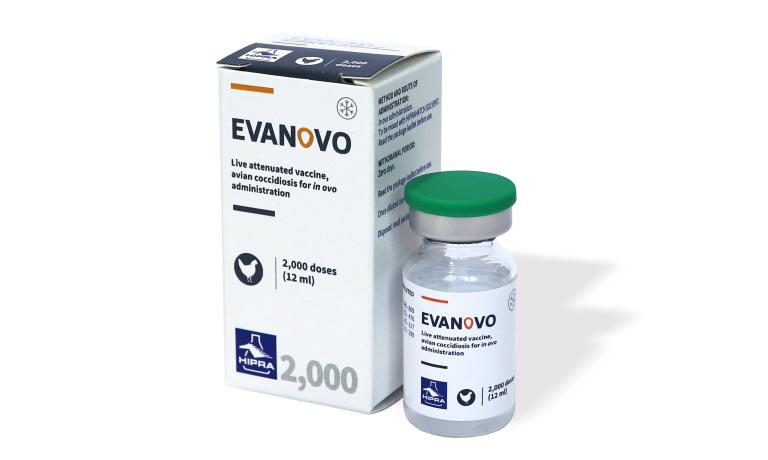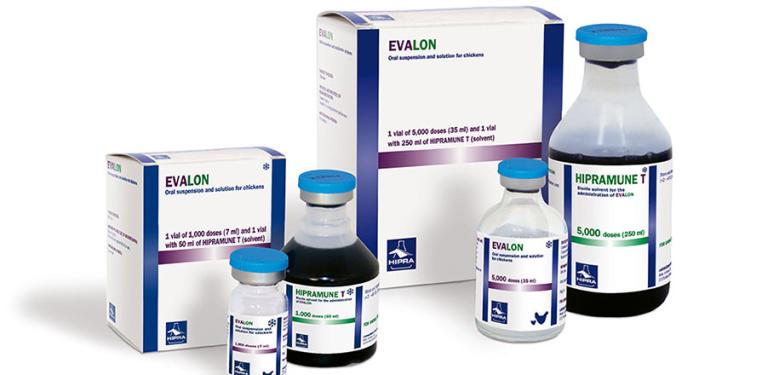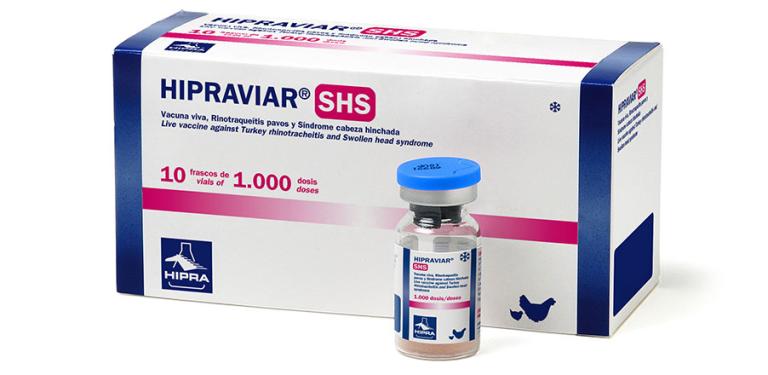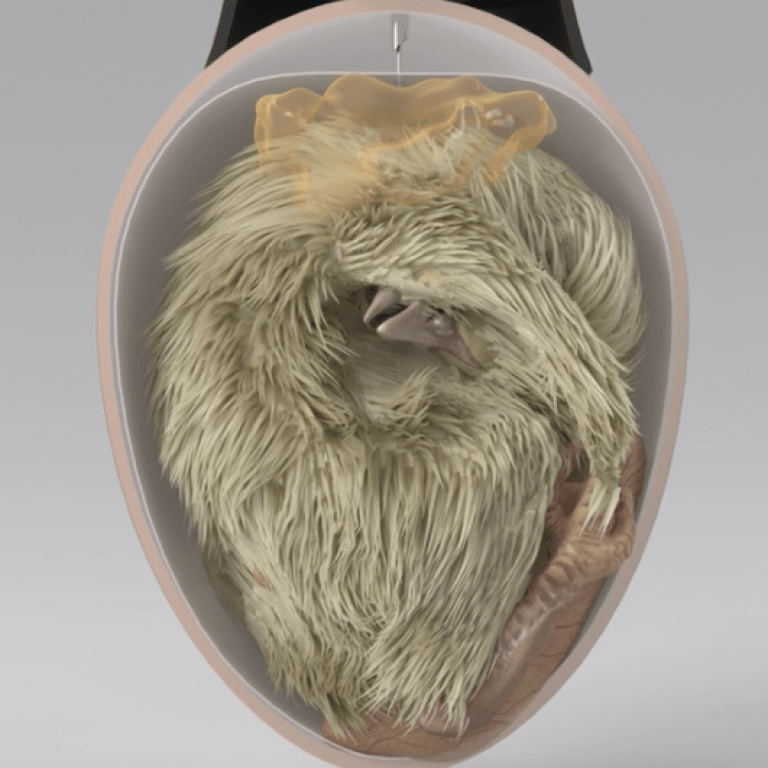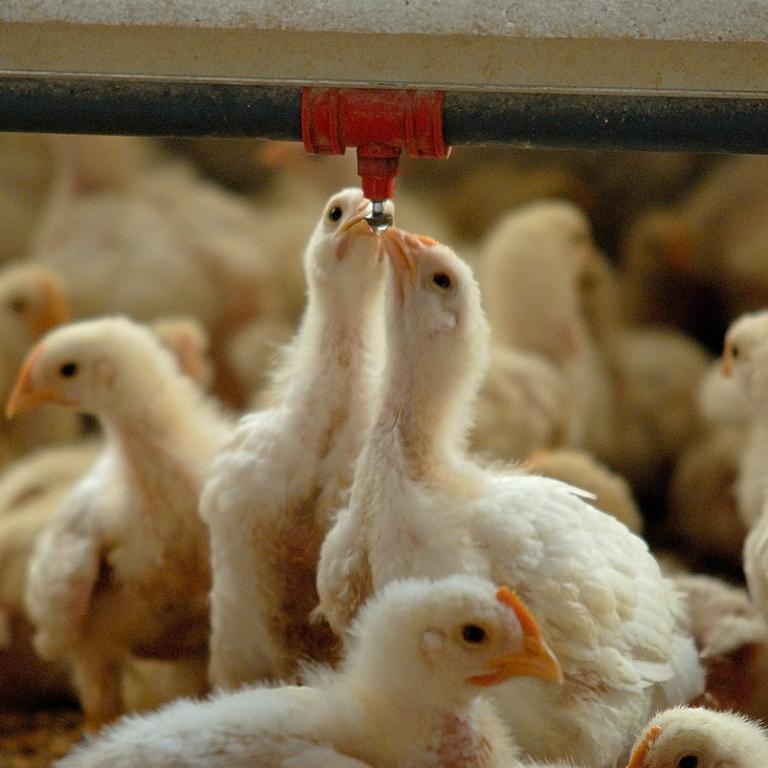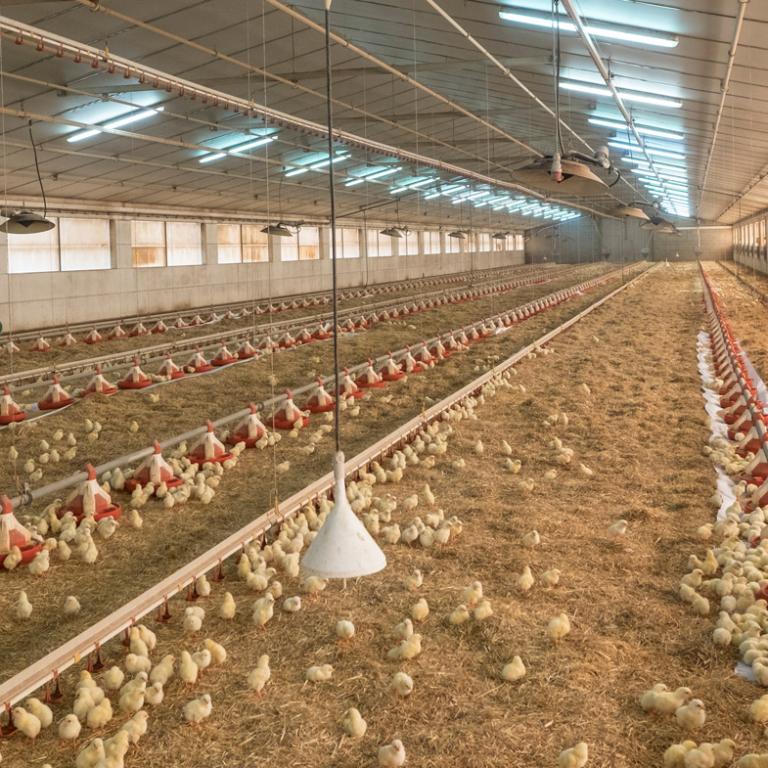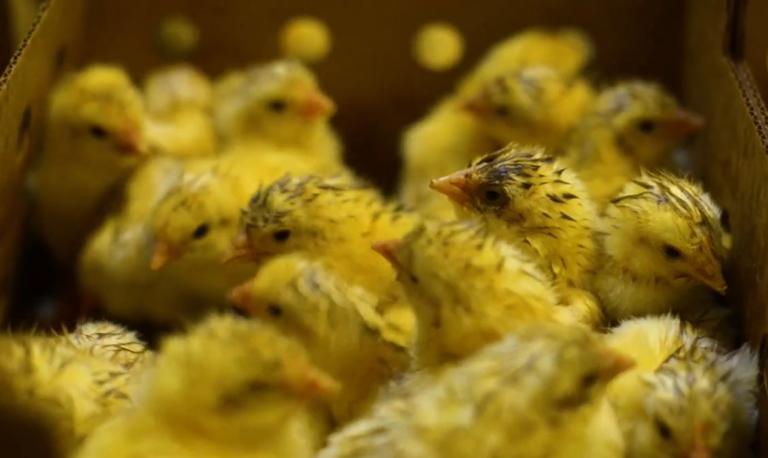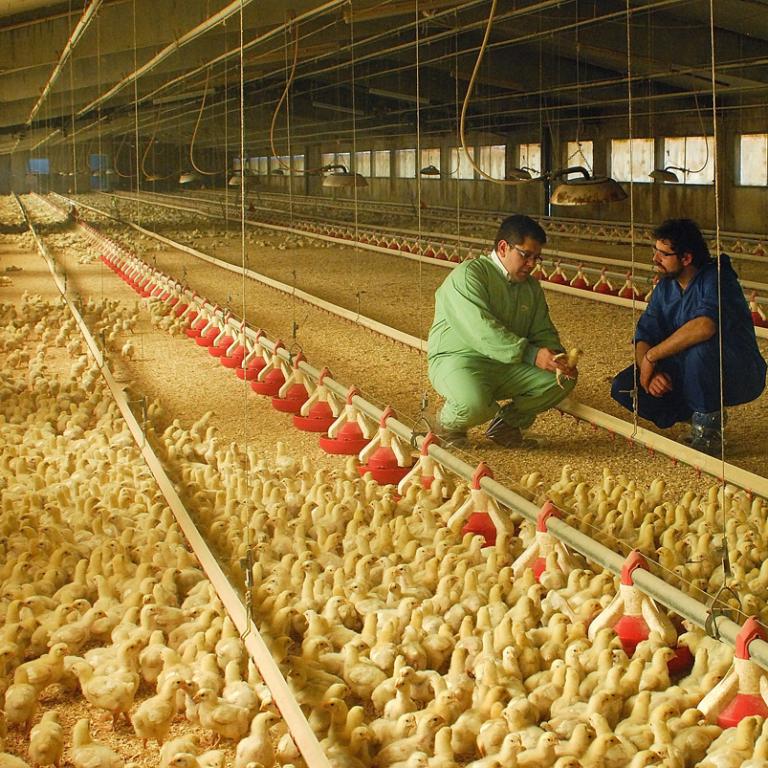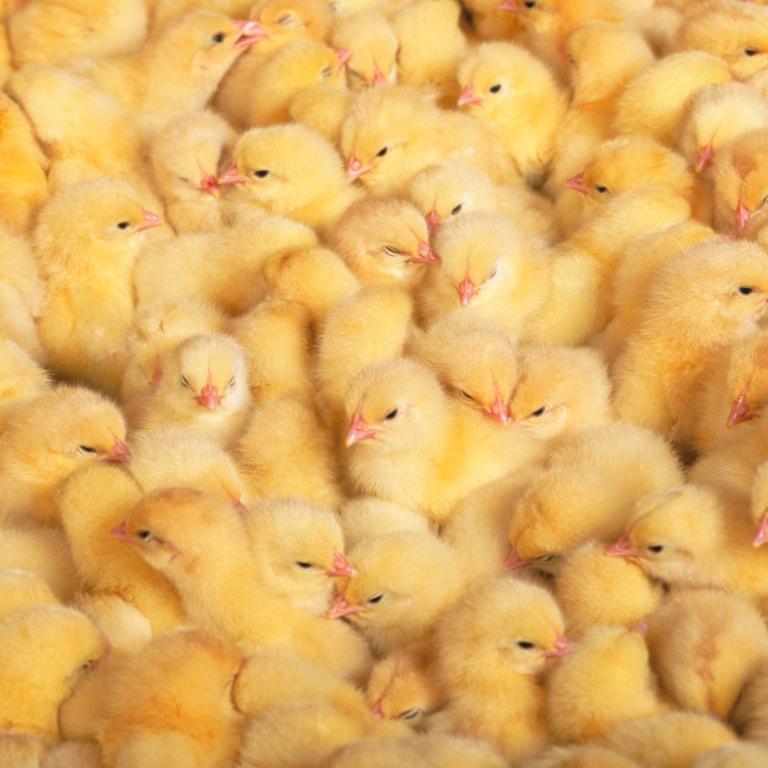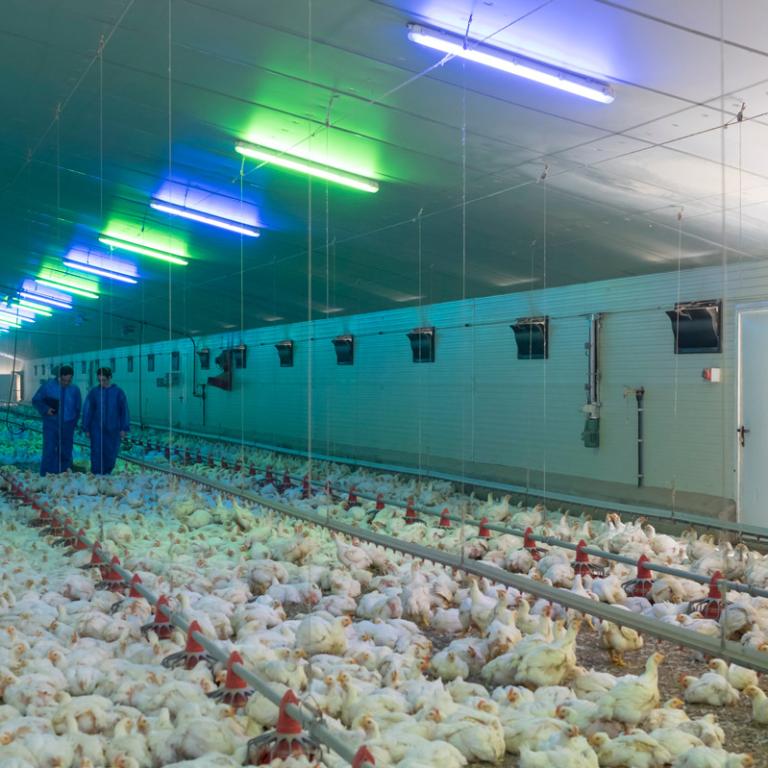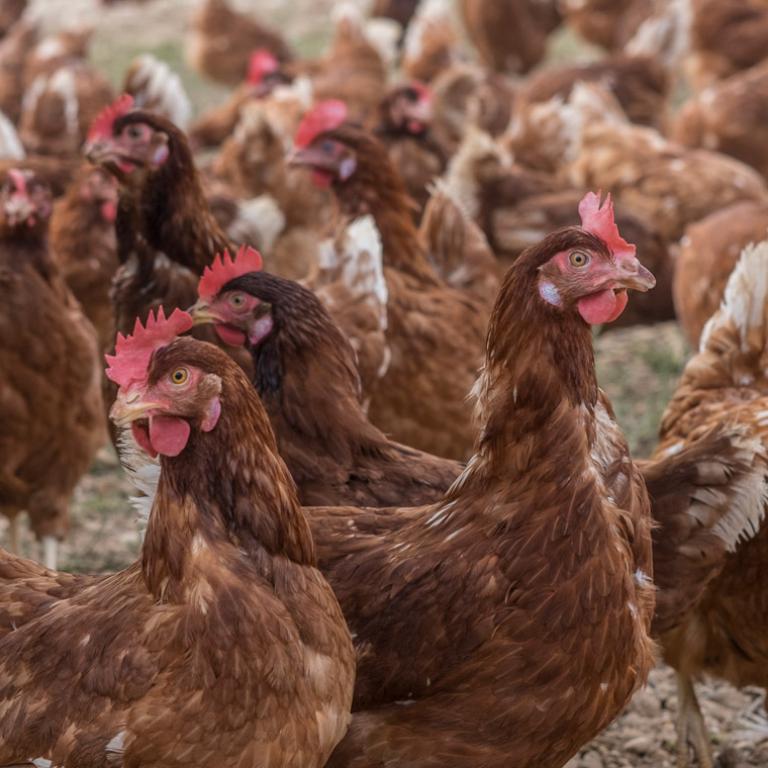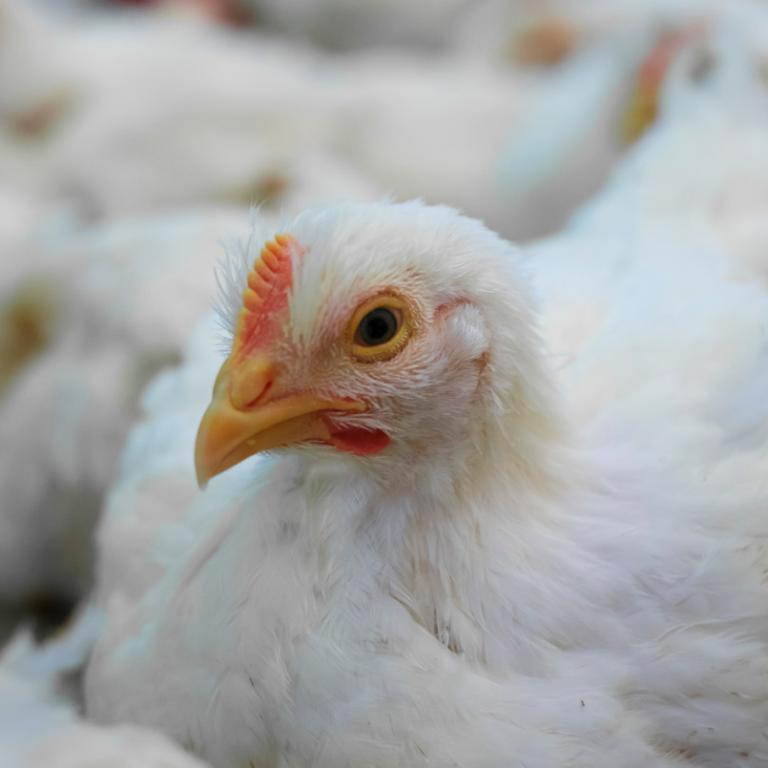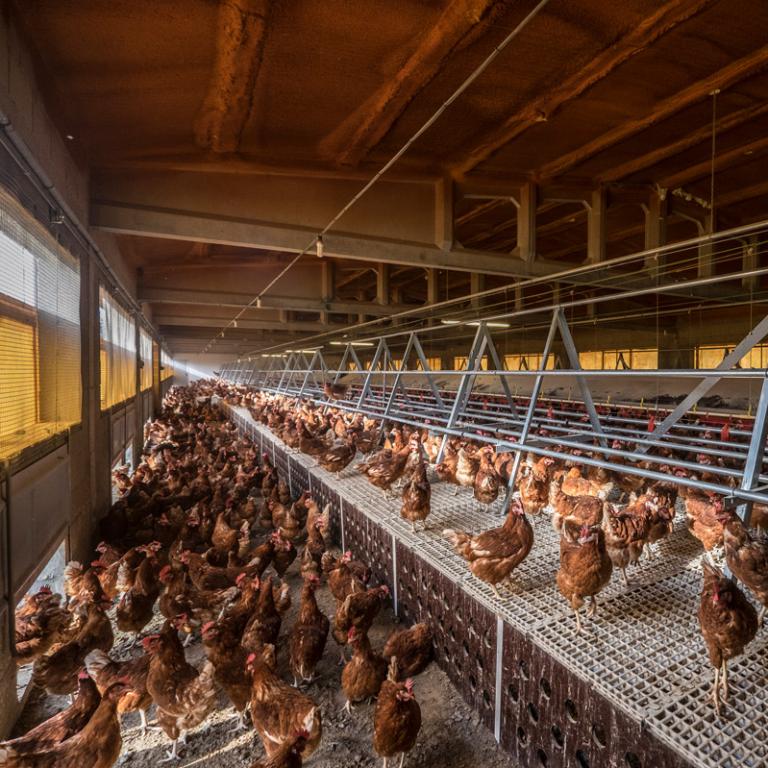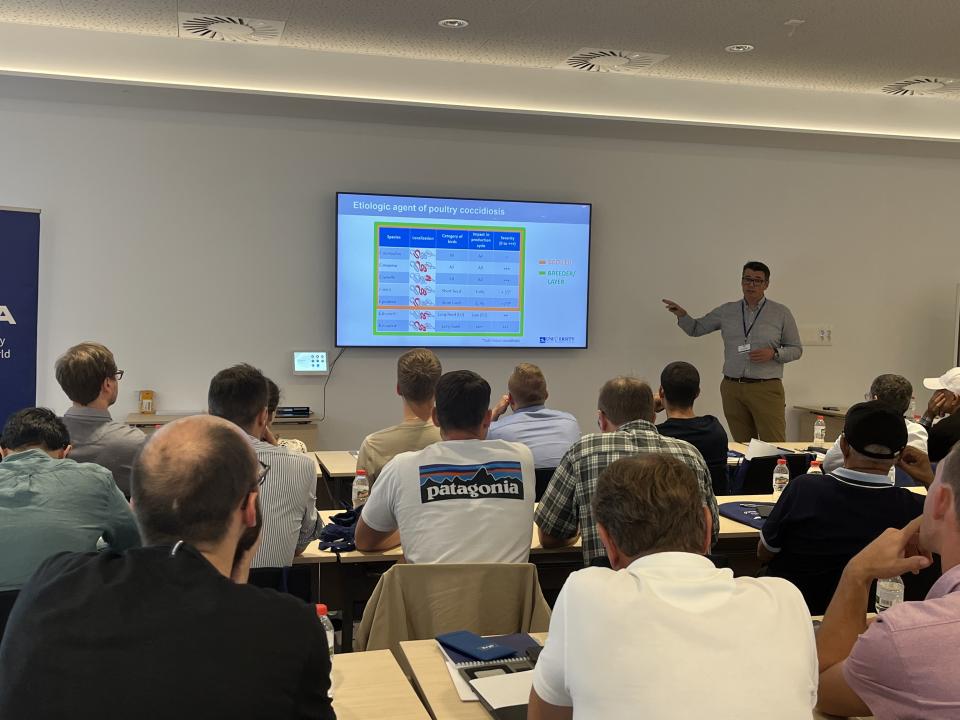IBD, INFECTIOUS BURSAL DISEASE
AETIOLOGY:
Double stranded RNA virus, it belongs to the genus Avibirnavirus of the family Birnaviridae, very resistant in the environment. Two Serotypes can be identified; the strains that causes the disease in poultry belongs to Serotype 1, while the strains of Serotype 2 are apathogenic.
TRANSMISSION:
- Direct: by faeces.
- Indirect: by fomites, farm staff and insects such as Alphitobius diaperinus.
CLINICAL SIGNS:
Diarrhoea, bristled feathers, septic shock, depression, prostration and comb paleness. Secondary processes appear due to immunosuppression: less response to vaccines, more incidence of coccidiosis and other pathological processes. It is possible to make a presumptive diagnosis based on the appearance of symptoms such as weakness, white diarrhoeas, bristled feathers, and lesions such as muscular haemorrhages, oedema and haemorrhages or bursal atrophy.
LESIONS:
Increased bursal size, oedema with gelatinous and haemorrhagic content, which over the course of the time becomes atrophic. Haemorrhages in thighs and breast muscles. Renal alterations: inflammation and accumulation of urate. It is possible to estimate the degree of virulence of the virus and its lymphocytary depletion capacity by doing a histological analysis of the bursal tissue.
DIAGNOSIS:
- Causal agent identification: Isolation, RT-PCR, RFLP.
- Serological: ELISA.
TREATMENT, PREVENTION AND CONTROL:
There is no effective treatment against the disease, although birds may be helped with drugs to treat symptoms so as to control secondary agents and the effects of immunosuppression.
One of the basics of prevention is the use of vaccination with inactivated vaccines in breeders so as to supply good passive immunity to the progeny. Chicks should be vaccinated with live vaccines when the level of maternal immunity is adequate so that the vaccine is not neutralised.
Moreover, and no less important, it is fundamental to ensure good levels of biosecurity, disinfections, and pest control as well as avoiding multi-age systems for reducing the incidence of the disease.


